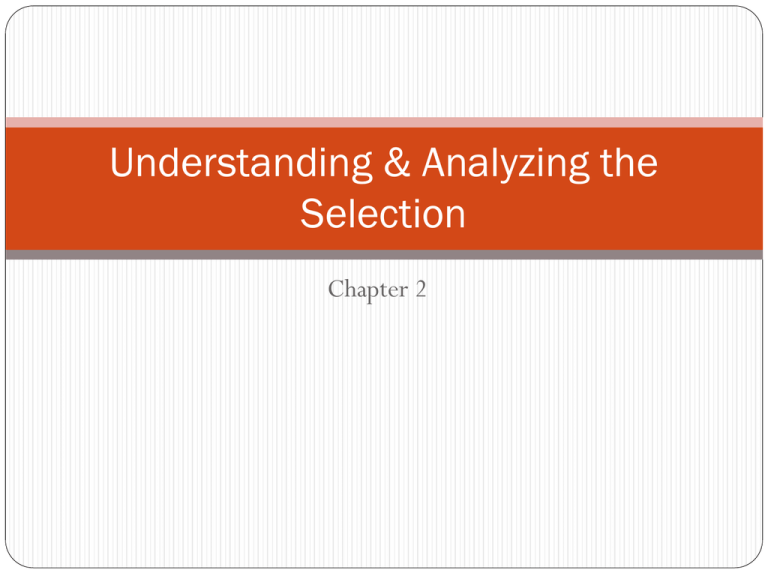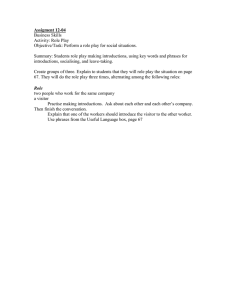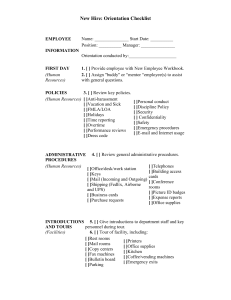Understanding & Analyzing the Selection Chapter 2
advertisement

Understanding & Analyzing the Selection Chapter 2 Selecting your Text Where to Look… Libraries Audio Resources Technology Newspapers College Libraries Internet College Bookstores Testimony Used Books Can you think of others? www.wetmoredeclamation.com Selecting Literature Consider Yourself Consider Your Capabilities Consider Your Audience Consider Literary Value Consider Appropriateness Understanding the Text Speaker Scene Audience Act Agency Purpose Introductions should… …prepare the audience …allow the audience to meet you …provide essential information …establish a mood Introductions should focus on… …how you relate to the selection …the category’s requirements …social issues …the writer’s purpose …an element of the selection Introductions should avoid… …running out of time …spoiling the experience by giving away too much …asking trite rhetorical questions …copying someone else’s introductions …either reading or performing your introduction Analyzing your text Denotative meaning Explicit meaning Connotative meaning Suggestions, overtones Persona The narrator Locus Physical & psychological state Structural Components, cont’d Climax Logical content Repetition Rhyme Emotional content Aesthetic Components Unity What holds the piece together Ex. Persona, Locus Connectives: and, then, later… Harmony Sentence structure layout Aesthetic Components, Cont’d Variety Associations are similar, but different (ex. Twins) Contrast Associations are opposite/different (Ex. “the Quiet noise” Aesthetic Components, Cont’d Balance & proportions Rhythm Stressed & Unstressed syllables Rhythm Content Technical Challenges Preparing script Using Excerpts Placing action Introduction Author of selection Prepare audience for events Establishes persona Adopting author’s language Cutting Literature for Performance Read the ENTIRE selection Thoroughly analyze the work as a whole Continuity is critical! Beginning, Middle, End Stay true to author’s intent Avoid cutting vivid passages Cut repetition (in prose) Cut tag lines Cut subplots Cut references to something you’ve already cut Rehearsal Techniques Establish regular schedule 110% Seek audiences Mark your manuscript Videotape Audiotape Work with other interpreters


